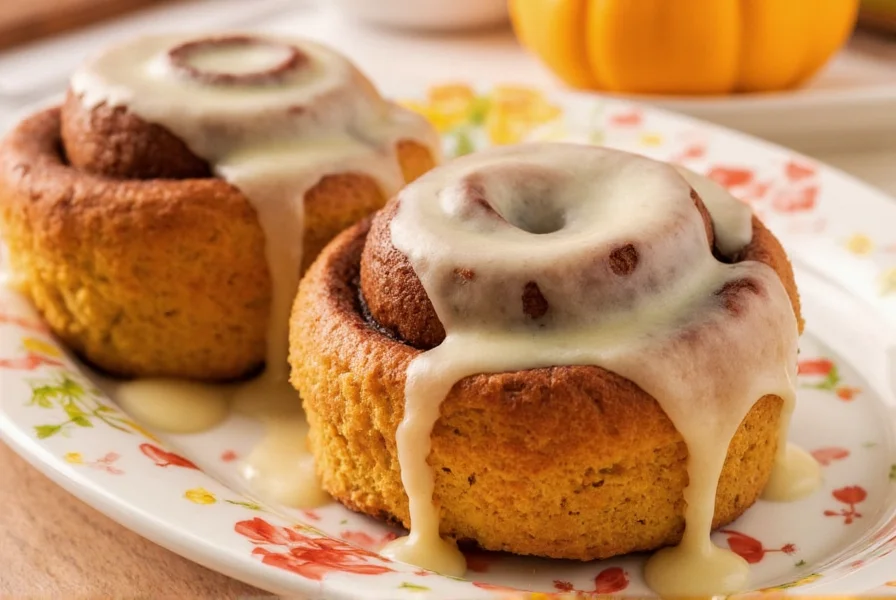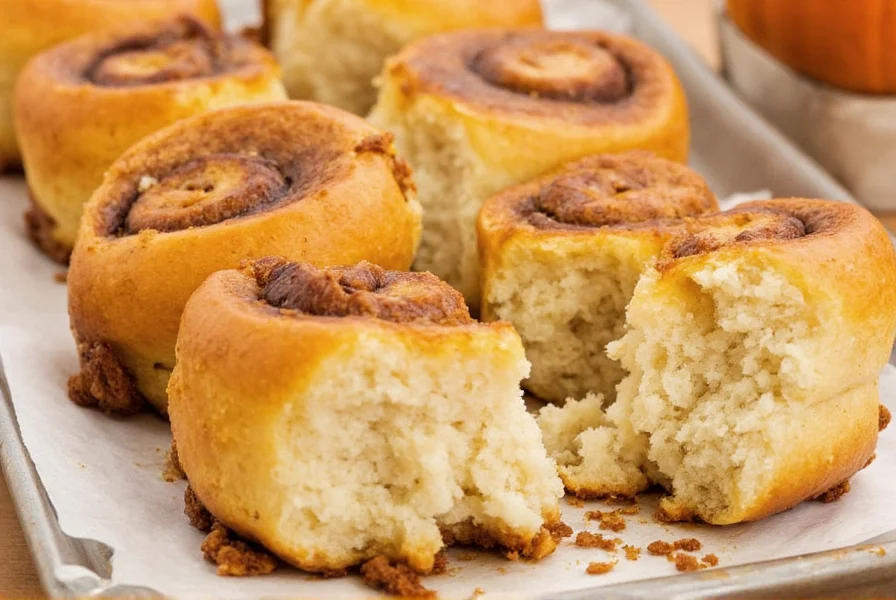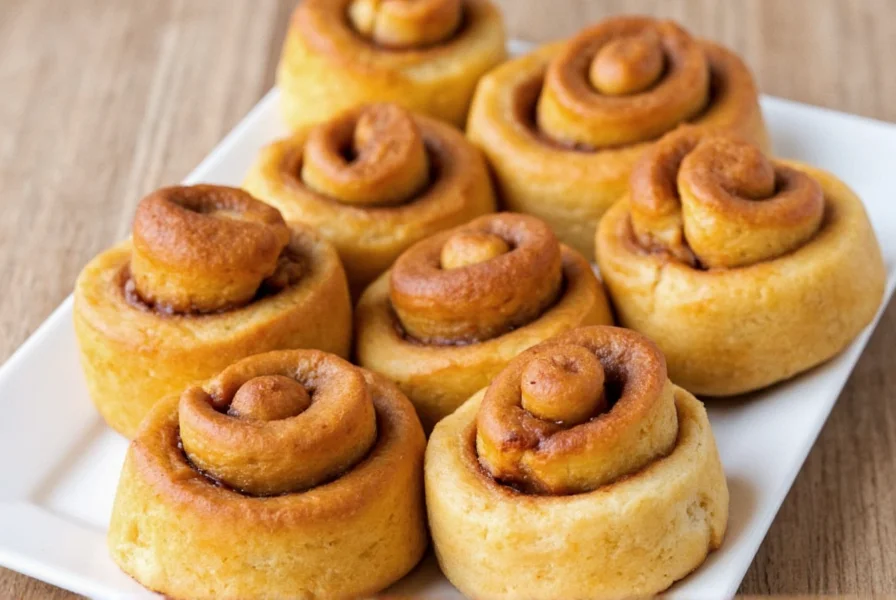As autumn leaves begin to fall, pumpkin cinnamon buns emerge as a beloved seasonal favorite that transforms the classic cinnamon roll into a harvest-inspired delight. These spiced pastries blend the comforting familiarity of cinnamon swirls with the earthy sweetness of pumpkin, creating a bakery-quality treat you can make in your own kitchen. Unlike basic cinnamon roll recipes, pumpkin cinnamon buns incorporate pumpkin puree directly into the dough, resulting in a richer texture and subtle pumpkin flavor that complements the cinnamon filling perfectly.
The Essential Components of Perfect Pumpkin Cinnamon Buns
Creating exceptional pumpkin cinnamon buns requires attention to three critical elements: the enriched dough, the flavorful filling, and the finishing glaze. The dough must balance the additional moisture from the pumpkin puree while maintaining proper structure for rising. Professional bakers emphasize that using room-temperature ingredients ensures even mixing and optimal yeast activation, which is crucial for achieving that signature light, pillowy texture.
| Ingredient | Traditional Cinnamon Rolls | Pumpkin Cinnamon Buns |
|---|---|---|
| Dough Base | All-purpose flour | All-purpose flour + pumpkin puree |
| Flavor Profile | Cinnamon dominant | Cinnamon-pumpkin spice blend |
| Texture | Light and airy | Slightly denser, more moist |
| Seasonality | Year-round | Fall-focused |
Mastering the Pumpkin Cinnamon Bun Dough
The foundation of exceptional pumpkin cinnamon buns lies in properly balancing the dough ingredients. Many home bakers make the mistake of adding pumpkin puree without adjusting other liquid components, resulting in dough that's too wet to handle. For every ½ cup of pumpkin puree added to your recipe, reduce the milk or water by approximately ¼ cup. This adjustment maintains the proper hydration level while incorporating the pumpkin flavor.
When preparing the dough, resist the temptation to add excess flour during kneading. Pumpkin-enriched dough will feel slightly stickier than traditional cinnamon roll dough, but this moisture contributes to the final product's desirable texture. Allow the dough to rest for 10 minutes after initial mixing before kneading—this gives the flour time to fully absorb the liquid ingredients.

Creating the Perfect Filling and Assembly
The filling for pumpkin cinnamon buns benefits from a spice blend that complements rather than competes with the pumpkin flavor. While traditional cinnamon roll filling relies primarily on cinnamon and sugar, pumpkin cinnamon buns shine with a more complex spice profile. A balanced blend of 2 tablespoons cinnamon, 1 teaspoon ginger, ½ teaspoon nutmeg, and ¼ teaspoon cloves creates the ideal flavor foundation without overwhelming the subtle pumpkin notes.
When assembling your pumpkin cinnamon buns, spread the filling evenly but leave a small border along one long edge of the dough rectangle. This technique creates a natural seal when rolling, preventing filling leakage during baking. Professional bakers recommend using dental floss rather than a knife to cut the rolled dough into individual buns—this method prevents squishing and ensures clean, even slices.
Common Challenges and Solutions
Many home bakers encounter issues with pumpkin cinnamon buns that don't arise with traditional cinnamon rolls. The most frequent problem is dough that doesn't rise properly due to the additional moisture from the pumpkin. If your dough seems reluctant to rise, create a warm, draft-free environment by placing the covered bowl in an oven with just the light turned on.
Another common issue is filling leakage during baking. To prevent this, ensure your filling doesn't contain excessive butter or liquid ingredients. A thick paste created by mixing the sugar and spices with just enough melted butter to bind them works best. If you notice leakage occurring, try reducing the amount of filling slightly or ensuring you've properly sealed the edge when rolling the dough.
Variations for Dietary Preferences
Pumpkin cinnamon buns can be adapted to accommodate various dietary needs while maintaining their signature flavor. For a dairy-free version, substitute plant-based milk and coconut oil for dairy ingredients. Gluten-free pumpkin cinnamon buns work well with a quality 1:1 gluten-free flour blend, though you may need to reduce liquid ingredients slightly as gluten-free flours often absorb more moisture.
Vegans can enjoy pumpkin cinnamon buns by using flax eggs (1 tablespoon ground flaxseed mixed with 3 tablespoons water per egg) and plant-based butter alternatives. When making these substitutions, allow extra time for the dough to rise, as alternative ingredients often require longer fermentation periods.
Storage and Serving Recommendations
Proper storage maintains the quality of your pumpkin cinnamon buns. Store cooled buns in an airtight container at room temperature for up to two days. For longer storage, freeze the unglazed buns on a baking sheet before transferring to freezer bags. When ready to serve, thaw at room temperature and warm in a 300°F oven for 10-15 minutes before adding glaze.
For the best eating experience, serve pumpkin cinnamon buns slightly warm. The heat enhances the aromatic spices and creates a delightful contrast between the warm interior and the cool glaze. Pair them with strong coffee or chai tea to complement the rich flavors.

Perfecting Your Pumpkin Cinnamon Bun Technique
Mastering pumpkin cinnamon buns requires attention to timing and temperature. The ideal dough temperature for proper yeast activity is between 75-80°F (24-27°C). If your kitchen is cooler than this, extend the rising time accordingly—cold dough may take 50% longer to double in size.
When testing for doneness, look for golden brown edges and an internal temperature of 190°F (88°C). Overbaking causes the pumpkin moisture to evaporate, resulting in dry buns, while underbaking leaves the center doughy. The perfect bake yields a tender crumb that pulls apart easily while maintaining structural integrity.











 浙公网安备
33010002000092号
浙公网安备
33010002000092号 浙B2-20120091-4
浙B2-20120091-4